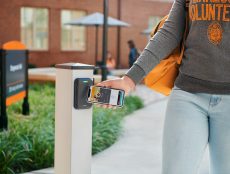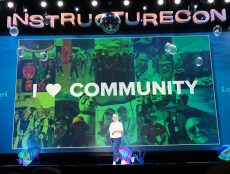
We have long been aware that the early development of children’s social, emotional, and cognitive abilities is key for lifelong learning and wellbeing. However, lively debate continues regarding how to make use of technology when teaching children ten and younger.
Many educators and parents view early-stage education academically and, therefore, rigidly. For example, preschools often stuff curricula and day-to-day education with academic instructions that hone in sharply on a particular skill, such as reading, calculating, or solving textbook problems.
Rather than taking a skills-only approach with young learners, educators can adopt a teaching style that develops their natural willingness and curiosity to learn and study instead by integrating technology to facilitate learning experiences from a young age. Some early-year educators utilize a play-based learning method to help children learn through play.
Let’s take a closer look at what is important in early-stage education and the tools that can help children develop a lifelong curiosity to learn.
Why the Right Early-Stage Education Is so Important
Young students are open to different learning experiences, and they also pick up new things more easily. As the brain slowly matures, so do the synapses, making connections and building habits that solidify with experience and repetition. Further, young children are less biased. This means they are more open to new information and alternative reasoning.
During this eight year period, children develop the base for their future development. Children also develop the curiosity to learn and the right habits and practices to study. Once children have these foundations to build on, it is easier for them to acquire skills of all kinds in the future.
Giving technological tools to children from a young age is a controversial issue. While many people are in favor of technology, others doubt its value with young children. However, using technology in a reasonable way can bring immense benefits to children. For example, if a school is teaching students about insects, visiting a botanical garden is a very practical and memorable experience. However, educators can’t go to a zoo or other off-campus locations every time they want to deliver a new learning experience. But with the help of technological tools such as simulations, explanatory videos, and other digital resources, teachers can replicate real-life experiences every day and on a large scale.
Using Technology in Pre- and Elementary School Classrooms
During early education, technology can facilitate different learning experiences, strengthen children’s curiosity, and build their ability to study self-sufficiently.
When school content is theoretical and abstract, educators can give children access to video materials, colorful interactive graphics, and educational apps. While audio-visual material grabs children’s attention and makes complex concepts easier to understand, using apps or web search enables children to follow their individual path of learning.
In preschool children should be able to explore, try, and experience things. Educators should focus on comprehensive learning experiences that strengthen children’s curiosity. For example, when students have their first contact with numbers, letters, and stories, teachers can use technology to practice content while they are playing. Smart speakers such offer gamified learning opportunities on how to spell words and how to count. Those games are endlessly repeatable and they motivate learners.
In elementary school, educators should start giving structure to explorations and encourage children to adapt routines so that learning processes become formalized. Those learning experiences can help children acquire new skills faster later on in life.
Throughout that phase, teachers must establish learning routines and alternate those frequently with playtime. Technological simulations, such as friendly and smart robots, are well designed to support a child’s learning session as they allow children to play and actively learn new skills.
During the whole period of early education, it is crucial to help children develop their social and emotional skills. Working in teams with peers will develop their empathy, communication skills, and abilities to resolve social conflicts in later years. Sharing technological tools to work together in school, students learn impeccable social skills: Playing with computers, apps, and simulations, they have to wait their turn, observe their peers solving problems and teach each their class companions how they can make use of the different tools.
Lastly, children that grew up using various technological tools can use these learning experiences in their vocational future, as workplace skills will become more and more technology-focused.
Project-Based Learning as a Technology-Based Pedagogy
One method educators can apply to achieve the goals of early education is project-based learning. This can be done by implementing several workstations in a classroom at which children can learn about a topic from a variety of angles – and by using technology to create various study experiences.
In preschool, educators can start by letting children rotate between several corners in the classroom. If the topic of the day is insects, children can rotate between a painting corner where they can draw an insect they know and a computer corner where they can solve digital quizzes to learn about insects’ living habits, different appearances, and natural habitat.
In elementary school, those projects can be more formalized. Let’s take water management as an example. In one zone, children can learn with computer simulations how water evaporates and falls as rain naturally. In the second thematic area, children can understand their own water usage’s impact on the environment. In the third area, they can deep dive into how sewage treatment systems work, and so on.
Computer simulations in each corner allow children to manipulate certain conditions and experience the direct effect of those changes. Learning about the natural cycle of water, children can learn to change the temperature of water to witness its state changes from liquid to ice, and vice versa.
During project-based learning, each corner connects different tasks, such as logical reasoning, creative skills, and playtime. It helps children to understand a complex concept by integrating knowledge points from various sources: A skill that becomes more vital for children every day as they grow into adults. Technology facilitates those diverse and cross-sectional experiences and encourages students to learn actively and self-sufficiently.
Final Thoughts
The ongoing digitization is a chance for us to reflect and look for new, technology-based learning opportunities in early-stage education.
Instead of shying away from technology, we should be integrating the right tools early on to help implement educational methods more efficiently and support children in their upbringing the best way we can.
Hugo Aguirre is the development and education director of TBox. TBox supports and advises educational institutions by offering relevant, dynamic, and integrated learning experiences to students.
Featured Image: Kelly Sikkema, Unsplash.









No Comments